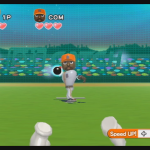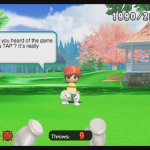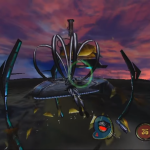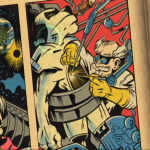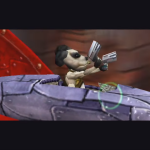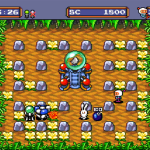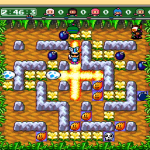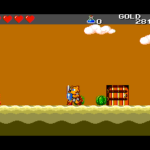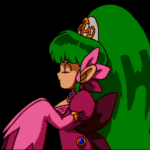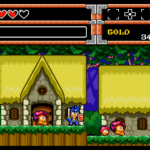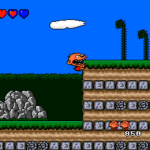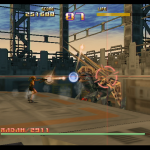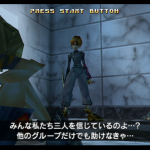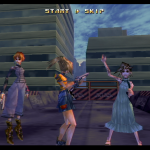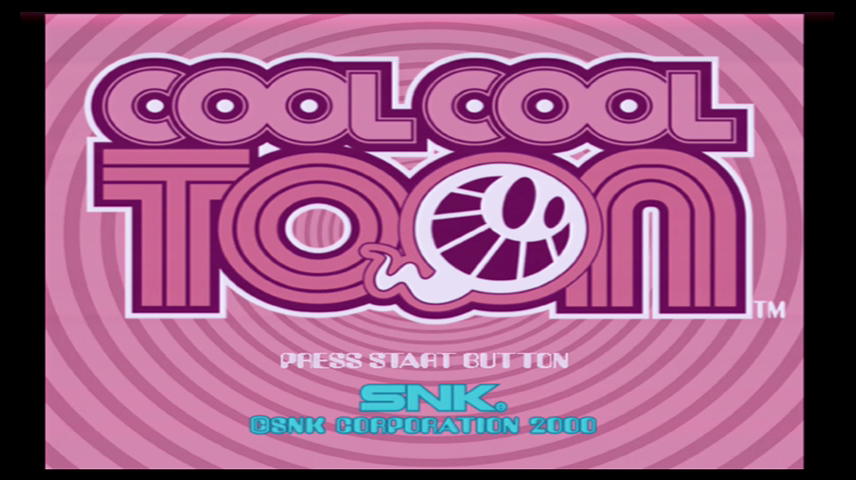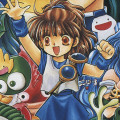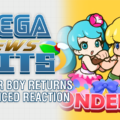
There’s only one day left before Nintendo pulls the plug on point purchases on the original Wii Shop on March 26th. We’ve already covered titles on the Mega Drive, Genesis, Master System and Arcade systems. What’s left on the service for the SEGA fan? We’ve still got a couple of WiiWare games to check out, some alternative versions to Wonder Boy games, and games from fan-favorite SEGA developers Atlus, Hudson and Treasure that appeared on non-SEGA platforms. Also we’ll be taking a look at options to back up your games once the store goes down for good. You can expect to see associated SEGA Retro articles to check out box and manual scans as well as additional information on each game in the list below. This is also a good time to let you all know about another one of our sister sites, NEC Retro which includes coverage of PC Engine and Turbo Grafx-16 games if you have not seen it before!
WiiWare
Nintendo’s online store eventually featured a lineup of original games made for their platform under the WiiWare label. Unfortunately WiiWare ended up being rather spotty due to harsh storage limitations, lack of advertising and the fact the other two major platforms had the added benefit of displaying in higher resolutions. WiiWare games paled in quality and didn’t match the lineup seen on Xbox Live Arcade or PlayStation Network. SEGA only ever put out two games on the service one of which being the Wii version of Sonic the Hedgehog 4 Episode 1. You can find this game on other platforms for a much lower price if you really want it. There’s still a few games worth checking out on the platform if you’re not looking for SEGA related titles. But here’s a couple of games worth looking into for SEGA fans.
Let’s Catch 1,000 Wii Points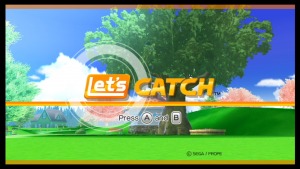
Released around the same time as Let’s Tap, Let’s Catch is another surprise casual game of playing catch that’s more deceiving than it looks. Developed by Prope and produced by Yuji Naka, the main game has you playing catch with people around town to ‘carry’ a conversation with you depending on how well you play catch. The stories can get pretty dark, even at the beginning of the game. You’re scored based on how quickly you can catch a ball, how you throw the ball and the game starts throwing obstacles in your way to make it more difficult to play catch. There’s also multiplayer modes for four players including Bomber Catch where players toss a bomb at each other, with the ball losing time based on how you catch and toss the ball. Despite this, the gameplay can get old fairly quickly but holds up because of its charm. It looks pretty similar to Nintendo’s own Wii games featuring Mii characters despite featuring it’s own style of generic human characters with clean visuals and a soundtrack that can match the calmness or ferocity of the game mode you play in.
[Let’s Catch SEGA Retro Article]
MDK 2 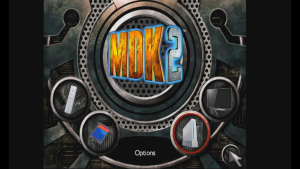 1,000 Wii Points
1,000 Wii Points
When Interplay reemerged from it’s bizarre gamer grave to announce that MDK 2 would be making its way as a digital download for the Wii seemed a bit too ambitious. If developers were granted a larger space to work with or if it was a disc-based release it would make more sense. For SEGA fans this was a bizarre yet humorous shooter on the SEGA Dreamcast developed by Bioware. Kurt Hectic who had just saved the world in MDK 1 is called back into action after finding a single Minecrawler on Earth thats slowly destroying everything in it’s path. After being sent to destroy it Kurt falls prey to the large, suave alien creature Shwang Shwing who invades Earth with his forces, throwing him, Dr. Hawkins who developed the iconic combat suit and Max– a six armed cigar chomping gun-toting K9. The sequel provides three gameplay styles with the three main characters as they fight for Earth’s safety while exploring massive alien worlds. Kurt sports the same suit from the first game that grants him the ability to float around with it’s built in parachute and pick off enemies at a distance with the suit’s sniper rifle. The doctor can combine items to make tools and weapons with makeshift pipes, duct tape, toasters and more. Finally Max is straight-up gun toting action with the ability to equip several guns at once for massive firepower. While the original game on the Dreamcast saw several ports and enhancements the WiiWare version is easily the worst due to massive compression of audio and textures to fit the service’s file size limits. It also lacks the game’s vertex lighting system with no suitable replacement making environments look lifeless. The added Wii-Remote + Nunchuck controls feel fine for the most part, but it’s tough to recommend when part of the game’s charm is it’s presentation that is hampered by this release. It does feature additional difficulty modes over the Dreamcast original along with solid 60fps gameplay. If you don’t have the option to go after one of the older ports and aren’t limited to consoles or if you aren’t curious how they attempted to fit the game into ridiculous file size constraints, you’re probably better off picking up the original PC port as it features most of the enhancements the WiiWare version sports without the compression issues.
Cross-Platform Ports
The Virtual Console doesn’t even come close to matching the library of each system represented thanks to expired licenses and the amount of closed developers with the rights to games being granted to who knows where. Then again who do you know that wants to see a re-release of the Genesis version of Richard Scarry’s Busy Town or if the modern gaming audience would lose it to a re-release of Zillion for the Master System. Regardless the Virtual Console did see the same games released for other platforms such as Street Fighter II on the Turbo-Grafx 16. But you may want to make sure you don’t pass up some of these titles as a number of them resonate quite well with those who owned them on a SEGA platform or you may be interested in checking out the differences you would have missed otherwise.
Bomberman ‘94 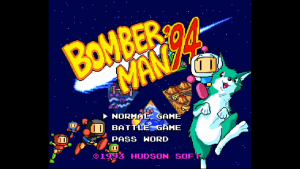 700 Wii Points
700 Wii Points
Released on the Genesis and Mega Drive as Mega Bomberman, the original version was released on the PC Engine, the Japanese counterpart to the Turbo-Grafx 16. Because of this the game only ever came out in English on SEGA’s platform with some differences and pared down features. The original release retains the same Single Player game of Bomberman travelling between worlds solving puzzles by dropping bombs in grid-like levels to destroy keys which will open a capsule in the middle of the stage to collect shards that will eventually bring Bomberman’s home planet, Planet Bomber, back together. The big draw here is the multiplayer mode and unlike the SEGA version you can play with up to five players so long as your Wii is able to use at least one GameCube controller. Multiple stage variations, team battles, power-ups and the introduction of Louie the rideable kangaroo-like creature make for intense firefights. Aside from the five-player multiplayer count, the game is otherwise identical to the port made for SEGA’s console that never made it to Virtual Console, but you do get more content out of this version of the game.
[Mega Bomberman SEGA Retro Article]
[Bomberman ’94 NEC Retro Article]
Wonder Boy Alternatives
SEGA owns the rights to the Wonder Boy franchise, but that did not stop developer Westone to converted their Wonder Boy games to other platforms. They made significant changes to the games in order to differentiate the games just enough for other potential markets. While the original Wonder Boy gave birth to Master Higgins and the Adventure Island series, other games in the series followed suit with even more changes after that. Here are just a couple to keep an eye on.
Dragon’s Curse 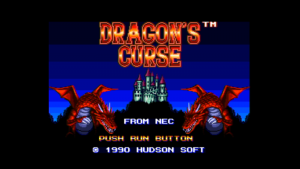 600 Wii Points
600 Wii Points
Originally released as Wonder Boy in The Dragon’s Trap the Turbo Grafx-16 version takes advantage of the hardware by providing a faster framerate, more colors and makes use of the more capable sound hardware. All of the player characters have been redrawn or recolored to differentiate itself from the original game and also provides four slots for backup save data in addition to the password-save system. Worth checking out if you want a slightly different take on The Dragon’s Trap.
[Dragon’s Curse NEC Retro Article]
The Dynastic Hero 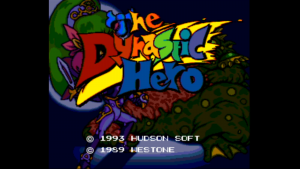 800 Wii Points
800 Wii Points
Originally released as Wonder Boy in Monster World the Turbo-CD version is highly sought after in the collector’s market making it hard to find. The games differences involve themes of insects and their predators making up the character designs. There’s also a brand new CD soundtrack along with vocal music tracks in place of the original music. The game is still largely identical despite differences in translation and certain sequences being easier than the original Monster World game.
[The Dynastic Hero NEC Retro Article]
Other Noteworthy Titles
Bonk’s Adventure 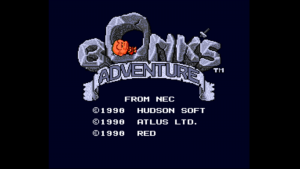 600 Wii Points
600 Wii Points
Touted as the mascot of the PC Engine and Turbo Grafx-16, Bonk’s Adventure was co-developed by Hudson, Red and Atlus while remaining titles in the series were developed between Hudson and Red. Red you may remember developing titles such as Tempo or the Sakura Wars series. A straight-forward run and jump platformer where the main character, Bonk, uses his large head for combat and provides clever platforming abilities. Such as the ability to bounce, wall-jump and even climb walls. Bonk served as a technical showcase for the 8-bit console with plenty of enemies of varying types and sizes, a nice cheery soundtrack and an expressive main character. The series spawned several sequels such as Bonk’s Revenge, Bonk III: Bonk’s Big Adventure and even had two spin-off shooters Air-Zonk and Super Air-Zonk. You can also find a Super Nintendo exclusive title, Super Bonk.
[Bonk’s Adventure NEC Retro Article]
Sin & Punishment – Successor to the Earth 1,200 Wii Points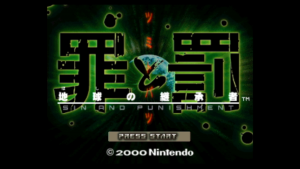
From the developers of Gunstar Heroes and Guardian Heroes, Treasure’s third Nintendo 64 game could easily be seen as a spiritual successor to Star Fox 64 and one of the most unique games on the platform. The game is an on-rails shooter where you move your character left-to-right while jumping over obstacles and enemy fire and striking enemies and large projectiles with your sword. If the idea of moving and shooting at the same time seems overwhelming, you can play the game with two players where one controls movement while the other shoots. Until it’s release on Virtual Console the game was exclusively released in Japan. This release provides English translations of the menus and the training sequence while the remaining text is still in Japanese. All cutscene dialogue is in spoken English, even in the original Japanese version and sounds just about as amazing as you might expect, especially with a story from Treasure that is as far out there as you want from them. Well probably. You play as one of two characters, Saki and Airan, fighting to save Japan from Peace Keeping corps that are eradicating citizens to minimize the risk of them turning into mutated creatures, known as Ruffians. The main characters partner with a mysterious girl named Achi who utilizes psy-powers to help during the game. You can purchase this game on the Wii U Virtual Console, however Nintendo 64 games face the issue of introducing input lag, even with the use of a Wii U GamePad. Nintendo 64 games on Wii U display at the same resolution as they do on the original Wii at 480p upscaled to the resolution of your choice.
No sister site article to look over here I’m afraid. However I would recommend checking out Hardcore Gaming 101’s article on this title.
Backing Up Your Games
You’re going to get to a point where you have to find a way to back up your games. You cannot transfer your games outside of the Wii to Wii U Transfer Tool, and even then you won’t be able to play your downloaded games on more than one system. When downloading a game from the Wii Shop you are given the option to download to the Wii System memory or on an SD card, if one is inserted. Wii system memory is limited to 512MB of space, which is shared with save data from other Virtual Console, WiiWare, applications and disc-based games. You’ll definitely want to look into SD card storage. As sort of a happy accident to Wii Shop software being limited to a maximum of 40MB, you should be able to get away with a 2GB SD card. Wii consoles sporting firmware 4.0 or above are able to make use of 32GB SDHC cards (or high capacity SD cards) to save games onto. All save data can only be read on the internal memory, but you can copy save data onto an SD card for archival purposes and even use them on other machines that bought similar software.
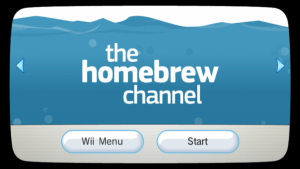 Not exactly the most exciting options available here. If something happens to your system that forces a format, your purchases are still tied to the system. But without access to the shop to redownload your purchases after servers go down in January 2019. You’re out of luck without any kind of SD card backup. At this point this is where you’ll have to resort to modding to future proof your purchases on your end.
Not exactly the most exciting options available here. If something happens to your system that forces a format, your purchases are still tied to the system. But without access to the shop to redownload your purchases after servers go down in January 2019. You’re out of luck without any kind of SD card backup. At this point this is where you’ll have to resort to modding to future proof your purchases on your end.
Now we’re not going to tell you how to softmod as there are plenty of in-depth tutorials online that shows you how to mod your system. These mods can work on all network capable Wii consoles including the Wii U’s Wii mode. We definitely recommend reading through tutorials online to ensure you don’t damage, corrupt or brick your console. The talented modding community has done what they can to ensure nothing will go wrong, but always make sure you account for the worst possible situation. Nintendo will refuse any repairs if they’re able to find any modifications were done to your system. It may sound ridiculous but if you don’t know what you’re doing, you may cause irreparable damage. You will be led to install the Homebrew Channel which is a great way to run homebrew software on your system.
The Wii Homebrew scene is quite massive and can allow you to use your system for far more things than it was intended for. For the purposes of this article, here are a some programs, scripts and homebrew channel apps to get started on backing up your software. A lot of these will create data on your SD Card or USB drive if the homebrew app allows it. If there is not enough space to your destination storage, the software may freeze which will cause you to hard reset your console. A lot of these will require the games to be stored on your 512MB NAND or Wii Internal Storage. Either download games from the Shop Channel or copy them from your SD card. Be sure to check out the links provided as they will feature instructions for setup and warnings to keep in mind to prevent damage to your system.
Homebrew Channel Apps
- Dump Mii NAND – This will dump the contents of your 512MB NAND. Not only does this copy save data from your console it will also copy the games that are on that space. You can then use programs such as Show Mii Wads to extract games as WAD files.
- Yet Another Blue Dump MOD – Allows you to manipulate data from your NAND on an individual level. You can extract channels as WAD files so long as the game is stored on your 512MB.
Software and Scripts
- Show Mii Wads Mod – A branch of ShowMiiWads, a tool that allows you to explore NAND backups and extract games as WAD files that can be used for modified Wii consoles or used in the Dolphin emulator. This branch is worth checking out as it accounts for games that are extracted with characters that are otherwise invalid characters for files on certain operating systems.
- vcromclaim – A series of Python scripts that allows you to extract ROMs from most Virtual Console channels in an extracted NAND dump, along with their e-Manuals in a streamlined manner. These scripts are fairly buggy and usually trips up on games released late in the Wii’s lifespan. There do exist some variants of the scripts for games that use alternate compression methods, but for SEGA console-specific games this should not be the case. If you’re handy with reading Python code you can comment out certain pieces of code for things you may not want, like the eManuals that I usually have trouble extracting and I don’t really care to use those. NOTE: An extracted ROM file may not retain modifications or patches made to the Virtual Console release such as the darker color pallete or game-specific patches. You will need to be able to run Python scripts to use this.
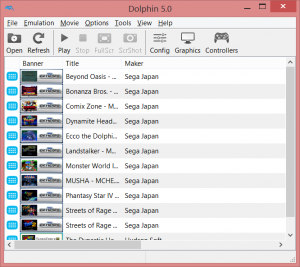 Dolphin – You very likely are aware of the Dolphin emulator thanks to the amazing community running the emulator. It’s capability even allows you to run Virtual Console and WiiWare games through Dolphin. You may want to consider running games through Dolphin as extracted WAD files are easy to manage, may have a lower footprint then “Machine accurate” emulators and are more powerful than most common emulators for consoles covered by the Virtual Console. Games run through Dolphin exactly as they would on a real Wii console. However if there are changes such as darker colors or game-specific patches like the level 99 patch in Phantasy Star IV, you’re still stuck with these modifications. Dolphin does allow the use of bluetooth receivers to make use of Wii Remotes as well as the Wii U GameCube adapter to make use of GameCube controllers.
Dolphin – You very likely are aware of the Dolphin emulator thanks to the amazing community running the emulator. It’s capability even allows you to run Virtual Console and WiiWare games through Dolphin. You may want to consider running games through Dolphin as extracted WAD files are easy to manage, may have a lower footprint then “Machine accurate” emulators and are more powerful than most common emulators for consoles covered by the Virtual Console. Games run through Dolphin exactly as they would on a real Wii console. However if there are changes such as darker colors or game-specific patches like the level 99 patch in Phantasy Star IV, you’re still stuck with these modifications. Dolphin does allow the use of bluetooth receivers to make use of Wii Remotes as well as the Wii U GameCube adapter to make use of GameCube controllers.
There are plenty of other homebrew apps and software to consider when backing up your content, but this will help you get started to preserve your purchases once Nintendo’s servers are long gone. If there are any other tips or recommendations you’d like to make, be sure to leave a comment on the article below.
Ad:
